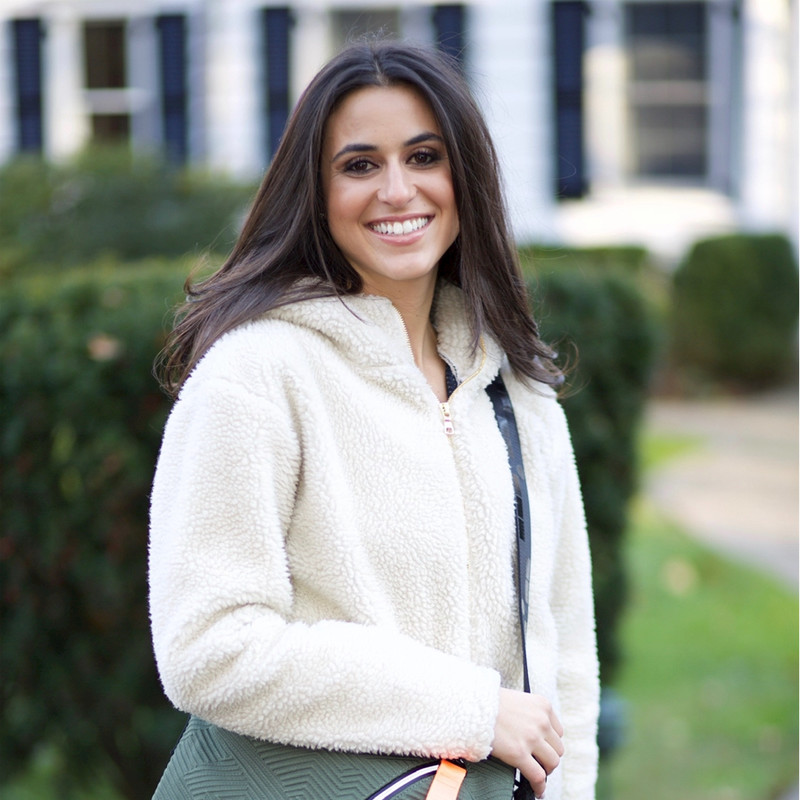Entrepreneur Case Studies
Building a Fashion E-commerce Business and Surviving Covid: Go Dash Dot CEO Hannah Fastov (Part 3)
Sramana Mitra: The positioning was as a gym bag.
Hannah Fastov: We started as a gym bag. Our first trade show and our first target demo was either to the fitness instructor who was teaching four different classes all over the place who was always on the go. We also targeted the avid gym goer who is going to the gym and then straight to work or vice versa. Once we started to sell the bag, I learned that it was so much more than that. A lot of people were using it for the gym but also for travel, baby bag, or tennis bag. We started to evolve into more of a lifestyle accessories brand.
>>>Building a Fashion E-commerce Business and Surviving Covid: Go Dash Dot CEO Hannah Fastov (Part 2)
Hannah Fastov: For six months, I couldn’t stop thinking about this idea. In January of 2016, I googled “New York handbag designer”. I found my designer who had been with me since the beginning. She helped me commercialize my ideas. She took what I wanted, made it into a bag that had the potential to sell, and created everything that we needed to send to a manufacturer.
>>>Building a Fashion E-commerce Business and Surviving Covid: Go Dash Dot CEO Hannah Fastov (Part 1)

Excellent story of a fashion e-commerce entrepreneur bringing to market a range of new bags.
Positioning, customer acquisition, business development, partnerships – many topics are dealt with in great detail in this conversation. Enjoy!
Sramana Mitra: Let’s start at the very beginning of your journey. Where are you from? Where were you born and raised? What kind of background?
>>>Building a Global AI Venture for Medical Imaging Analysis from India: Prashant Warier, CEO of Qure.ai (Part 7 )
Sramana Mitra: The lifetime value of the customer is much higher.
Prashant Warier: I don’t think we have had more than one or two churn. That means a lot to me. The lifetime value is high. Also, it takes time to activate a market. Once there is a reasonable number of users in a certain market, that is when you start seeing the cost of sales become low. Initially, you might have to spend a lot. If you look at the cost of sales, you might not be making money on that particular customer. Then you are hoping that you’ll make money on the 31st customer.
>>>Building a Global AI Venture for Medical Imaging Analysis from India: Prashant Warier, CEO of Qure.ai (Part 6)
Sramana Mitra: When did you enter the US? Before of after the Sequoia funding?
Prashant Warier: Just before the Sequoia funding, we hired our Chief Commercial Officer, but we didn’t have FDA clearance. FDA clearance came in 2021. Our real traction was in 2022. Even now, we are very small in the US. We have some commercial traction, but we’ve a long way to go. The other thing is that we are able to identify patients early.
>>>Building a Global AI Venture for Medical Imaging Analysis from India: Prashant Warier, CEO of Qure.ai (Part 5)
Sramana Mitra: When you validated the TB use case in 2018, did you put that as your only use case? Were you doing other radiology use cases as well?
Prashant Warier: We had a lot of other use cases. We are also working on a head CT product. Chest X-rays has a high volume. The other one requires speed. AI can manage volume and speed. Head CTs are taken when you’re looking at critical cases. When you want to do something quickly, you do a CT. You need a fast interpretation there. For a stroke patient, for every minute that goes by, brain cells are dying. You want to intervene quickly.
>>>Building a Global AI Venture for Medical Imaging Analysis from India: Prashant Warier, CEO of Qure.ai (Part 4)
Sramana Mitra: How did you find this customer?
Prashant Warier: TB is not one of those things that you can identify on an X-ray. If there is TB, it is likely that the X-ray will show some abnormality, but not every abnormality is likely to be TB. It could be other kinds of disease. Even COVID might look somewhat similar. It’s not precise. The patient comes in and takes an X-ray. If the X-ray is positive, you can do a microbiological test. That is a confirmation.
>>>Building a Global AI Venture for Medical Imaging Analysis from India: Prashant Warier, CEO of Qure.ai (Part 3)
Sramana Mitra: How long did it take you to build a product based on this data?
Prashant Warier: We started in 2016 — a lot of the data acquisition happened by mid-2017. In the first year of Qure, I was on the road working on getting more data. As a data scientist, I knew that data was key. You see algorithms built on a hundred images that don’t work. We spent time getting access to a lot of data. 2017 was when we started building our core products.
>>>